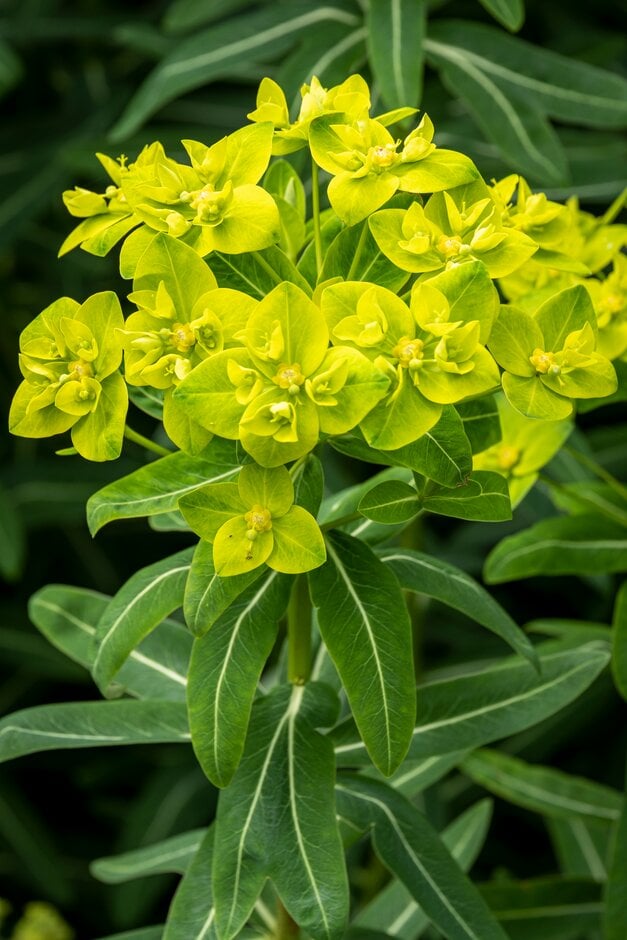Euphorbia wallichii Hook. f.
Wallich spurge
A variable perennial to around 60cm tall often forming bushy clumps of upright stems with dark green leaves up to 7.5cm long marked with a pale central vein. Bright yellow flowerheads up to 12.5cm across are produced from late spring into summer
Size
Ultimate height
0.5–1 metresTime to ultimate height
2–5 yearsUltimate spread
0.1–0.5 metresGrowing conditions
Moisture
Moist but well–drained, Well–drainedpH
Acid, Alkaline, NeutralColour & scent
| Stem | Flower | Foliage | Fruit | |
| Spring | Yellow | Green | ||
|---|---|---|---|---|
| Summer | Yellow | Green | ||
| Autumn | Green | |||
| Winter |
Position
- Full sun
- Partial shade
Aspect
South–facing or West–facing or East–facing
Exposure
Exposed or ShelteredDrought resistance
Yes Hardiness
H5Botanical details
- Family
- Euphorbiaceae
- Native to GB / Ireland
- No
- Foliage
- Deciduous
- Habit
- Bushy, Clump forming
- Potentially harmful
- Humans/Pets: IRRITANT to skin/eye, harmful if eaten. Wear gloves and other protective equipment when handling. For further information and contact numbers regarding pets, see the HTA guide to potentially harmful plants
- Genus
Euphorbia can be annuals, perennials, shrubs or succulents, with milky sap and small flowers held within cupped, often colourful bracts
- Name status
Correct
- Plant range
- Asia
How to grow
Cultivation
Grows best in a fertile soil in full sun but will tolerate partial shade. See Euphorbia for further advice
Propagation
Propagate by seed, by division or by basal cuttings taken in spring or early summer
Suggested planting locations and garden types
- City and courtyard gardens
- Cottage and informal garden
- Coastal
- Wildlife gardens
- Flower borders and beds
Pruning
Cut back flowering shoots to ground level in late summer or autumn
Pests
Generally pest-free
Diseases
Generally disease-free
Get involved
The Royal Horticultural Society is the UK’s leading gardening charity. We aim to enrich everyone’s life through plants, and make the UK a greener and more beautiful place.

